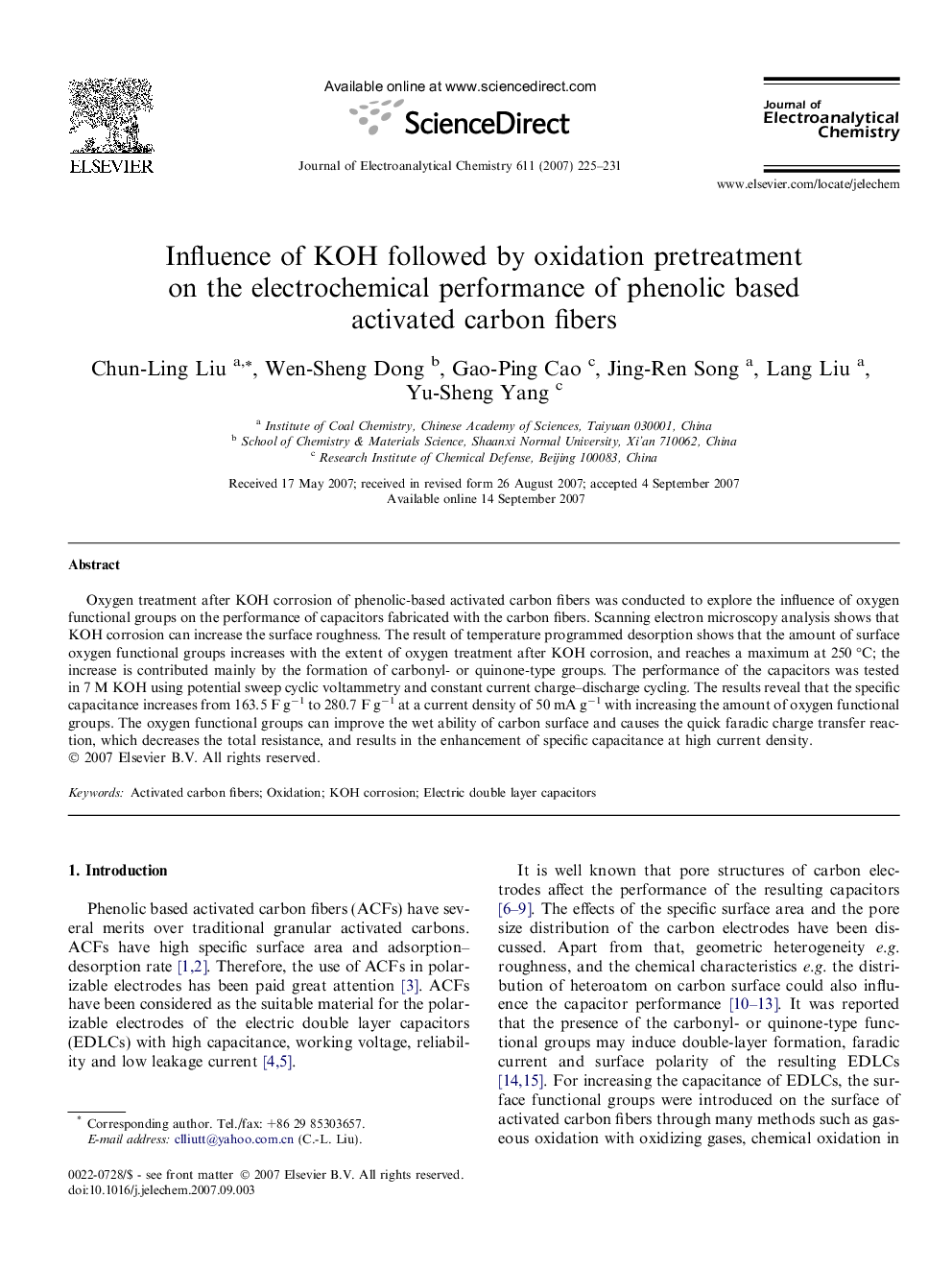| Article ID | Journal | Published Year | Pages | File Type |
|---|---|---|---|---|
| 220701 | Journal of Electroanalytical Chemistry | 2007 | 7 Pages |
Oxygen treatment after KOH corrosion of phenolic-based activated carbon fibers was conducted to explore the influence of oxygen functional groups on the performance of capacitors fabricated with the carbon fibers. Scanning electron microscopy analysis shows that KOH corrosion can increase the surface roughness. The result of temperature programmed desorption shows that the amount of surface oxygen functional groups increases with the extent of oxygen treatment after KOH corrosion, and reaches a maximum at 250 °C; the increase is contributed mainly by the formation of carbonyl- or quinone-type groups. The performance of the capacitors was tested in 7 M KOH using potential sweep cyclic voltammetry and constant current charge–discharge cycling. The results reveal that the specific capacitance increases from 163.5 F g−1 to 280.7 F g−1 at a current density of 50 mA g−1 with increasing the amount of oxygen functional groups. The oxygen functional groups can improve the wet ability of carbon surface and causes the quick faradic charge transfer reaction, which decreases the total resistance, and results in the enhancement of specific capacitance at high current density.
